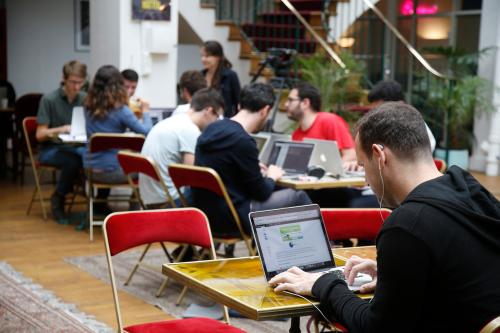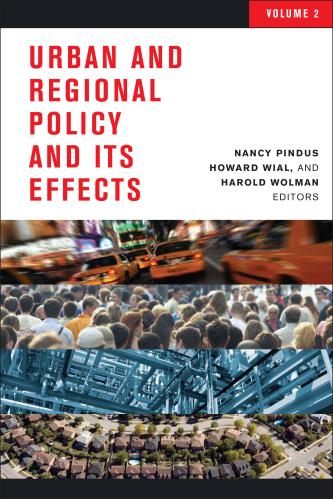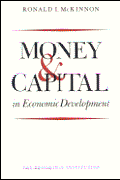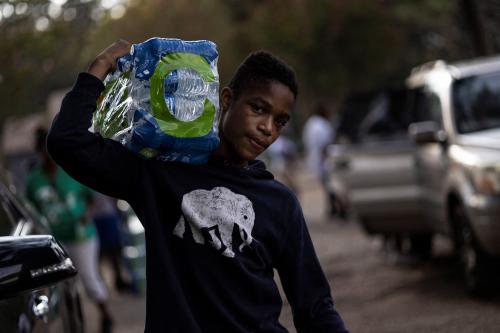Amid growing concern that the economy is not creating widespread opportunities, more and more regional civic and community leaders are sharpening their focus on inclusion within their broader economic development strategies. The CenterState Corporation for Economic Opportunity (CenterState CEO) in central New York has pioneered innovative economic efforts around exports, new technologies, and workforce development. It just added one more initiative to watch —a new undertaking focused on economic inclusion, bolstered by the region’s $500 million award from the state of New York as part of the Upstate Revitalization Initiative (URI).
To learn more about the region’s approach, I reached out to Dominic Robinson, CenterState CEO’s first vice president for economic inclusion.
Inclusion falls outside the traditional scope of an economic development organization. How do you define economic inclusion, and how did it become central to CenterState CEO’s strategy?
For us, economic inclusion begins by acknowledging that the Syracuse region, like many of our peers in the post-industrial Midwest and Northeast, faces unacceptable rates of poverty and economic disparity. While an economic development organization might have relegated these issues to community developers, we’ve decided to address this reality head-on, with encouragement from our business and civic leaders.
If unaddressed, these dynamics will pose a serious long-term threat to our economy as a whole—from increased demand for social services, to potential spikes in crime, to increased blight in our neighborhoods. We must rise to the challenge by translating economic growth into economic opportunity for all.
What types of strategies or specific initiatives do you plan to pursue to promote economic inclusion?
This challenge cannot be met with a single solution; it requires a diverse array of innovative strategies, undertaken by a broad collaboration of organizations and leaders.
With Work Train, our “dual client” workforce development platform, we’re fostering workforce solutions that meet both the hiring needs of local employers while creating career opportunities for un- and underemployed residents.
We’re also focused on empowering neighborhood-based, minority, and other underserved entrepreneurs and business owners, including by supporting an emerging regional minority chamber of commerce and piloting a business incubation and expansion program for neighborhood-based and minority entrepreneurs.
And we’re supporting a variety of initiatives and projects aimed at stabilizing and revitalizing distressed neighborhoods, towns, and villages. This often means working with anchor institutions and social service agencies and providing strategic and technical assistance (not to mention advocacy) for real estate, business attraction, or expansion projects that can have a positive impact on low-income communities.
What are you doing to ensure that inclusion is integrated across CenterState CEO’s economic development activities and is not just a separate line of business?
It’s been critical to identify points of alignment between our work and that of colleagues who are engaged in more traditional economic development.
The business and economic development team is working intensively with hundreds of employers at any given time, on everything from developing export plans to increasing brand visibility, so it just makes sense to empower those colleagues to also address talent and hiring challenges.
And as we develop programs targeting underserved, neighborhood-based, and minority entrepreneurs, we’re embedding that work in our innovation and entrepreneurship efforts. Not only has that made the process more efficient, it’s created a more diverse network of startups within our organization’s portfolio.
The region is about to launch a new Alliance for Economic Inclusion with funds from the Upstate Revitalization Initiative. Who are its members and what is its mandate? How is it going to help you deepen the economic inclusion work in the region?
The Alliance for Economic Inclusion (AEI) emerged from an intensive planning process for our URI proposal. After bringing together a diverse cross section of community leaders to help develop strategies that would ensure alignment between economic growth and economic opportunity, we realized we needed a long-term vehicle for managing that alignment. We proposed that the alliance be formed to develop a framework for rolling out inclusion initiatives laid out in the plan and ensuring a transparent and outcome-oriented approach to how these funds are prioritized and allocated.
The members of the alliance itself will be appointed soon by the Central New York Regional Economic Development Council (the body appointed by the governor to develop and administer regional plans). We expect that the alliance will be diverse geographically (urban, rural, and suburban), racially, and occupationally (public, private, and non-profit sectors).
There are important intersections between CenterState CEO’s economic inclusion agenda and the alliance. Along with other regional organizations, CenterState CEO will be responsible for implementing initiatives funded by the alliance. And since we will be actively involved in many other URI-funded initiatives, we will also be able to identify additional opportunities for economic inclusion. However, meaningful engagement from the grassroots level is important too. If CenterState CEO is driving the entire process, it won’t be truly effective.
What hurdles do you anticipate in ensuring that economic inclusion is not just a concept, but becomes a reality in your region?
Achieving economic inclusion involves dealing with systemic and intractable issues, such as the complexities of concentrated poverty. Effective solutions must ultimately account for these realities, despite the fact that they’re often not given much consideration within the realm of economic development.
The strategy also requires bringing together disparate parties, including along racial and urban-suburban-rural divides, to solve really difficult challenges, which will not always be a smooth process.
Brookings has provided ongoing advice related to New York economic development programs, including the Regional Economic Development Councils, Upstate Revitalization Initiative, and Buffalo Billion. Brookings has also worked with Central New York through the Brookings-Rockefeller Project on State and Metropolitan Innovation and the Global Cities Exchange to help the region develop broad economic, export, and foreign direct investment strategies. To support Brookings’ research and work with metro areas, CenterState CEO previously provided general support funds. Brookings maintains its absolute commitment to quality, independence, and impact. Activities supported by its donors reflect this commitment and the analysis and recommendations are solely determined by the scholar.
The Brookings Institution is committed to quality, independence, and impact.
We are supported by a diverse array of funders. In line with our values and policies, each Brookings publication represents the sole views of its author(s).








Commentary
Including inclusion: A new approach to economic development in Upstate New York
February 4, 2016